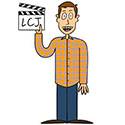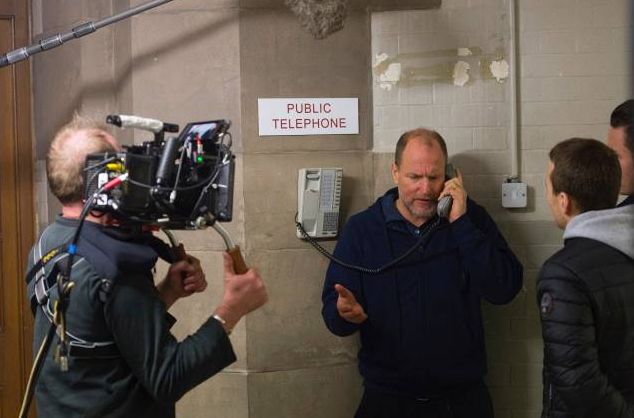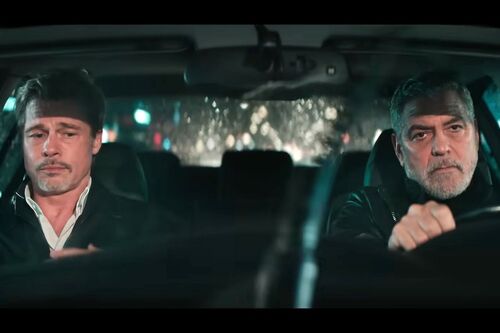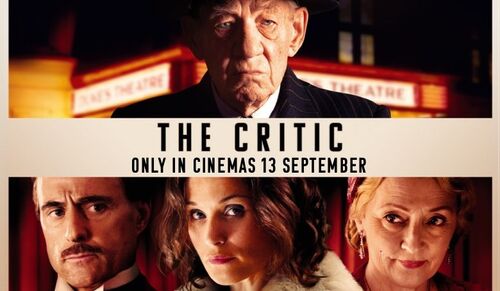
"Lost in London LIVE"
 Woody Harrelson is best known for the classic TV comedy “Cheers”, films "White Men Can't Jump", "Natural Born Killers", "The People vs. Larry Flynt" (for which he received his first of two Oscar nominations) and, more recently, for his role as Haymitch in the blockbuster “Hunger Games” franchise. But his latest film may just be the greatest achievement of his stellar career to date.
Woody Harrelson is best known for the classic TV comedy “Cheers”, films "White Men Can't Jump", "Natural Born Killers", "The People vs. Larry Flynt" (for which he received his first of two Oscar nominations) and, more recently, for his role as Haymitch in the blockbuster “Hunger Games” franchise. But his latest film may just be the greatest achievement of his stellar career to date.
Harrelson wrote, directed and starred in "Lost in London" - the first feature film to be shot in real time and broadcast live. “Lost in London” was filmed in one continuous shot (over 105 minutes), using just one camera, and livestreamed into movie theaters throughout the U.S. and England. The historic (Fathom) event took place early this past Friday (1/20) morning in London (and seen in the U.S. Thursday night), following months of planning and rehearsals.
Harrelson’s goal was to combine the experiences of live theater and movies. He was nervous about the numerous potential technical issues, especially since this was a one-shot deal: “It was scary - the whole process.” But “Lost in London LIVE” was, and will go down in cinematic history as, a MAJOR, revolutionary success.The screenplay, Harrelson’s first, is based on a wild night he had in London 15 years ago. He thought it “would make for great comedy”. And to a large extent, he was right. The opening title card reads, “Too much of this is true.”
Harrelson, who plays himself, is in London doing a play. One of the city’s ruthless tabloids newspapers publishes a picture of him cavorting after hours with three women. The scandal threatens Harrelson’s relationship with his wife and two daughters, and triggers a series of events involving, among others, a prince, a gypsy and, eventually, the London police.
The fun really kicks-in when Owen Wilson shows-up (as himself). He tries to help “best friend” Woody out of his predicament (Harrelson admitted in the post-show Q&A that the real celeb he met at the nightclub that evening was Leonardo DiCaprio, but he couldn’t figure out how to make that funny). Wilson’s scenes with Harrelson are some of the comedic highlights of the movie, as they take turns poking fun at each other’s careers, as well as blasting other Hollywood celebrities and the industry as a whole.
Wilson admitted he had plenty of anxiety going into the live shoot, having never performed live prior to this. He calls what Harrelson was able to accomplish “radical, brave and inspiring.” There are also a few surprise cameos in “Lost in London”, as well as a musical/mystical appearance by singer Willie Nelson.
Often, when a filmmaker chooses to do something unique (such as Richard Linklater filming “Boyhood” over a period of 12 years), while the technique may be amazing, the story suffers. That's not the case here. The “Lost in London” script is worthy of a traditional treatment, so the energy that came with doing it live only added to the overall enjoyment.

And the technical execution was nearly flawless. Rehearsal time was 4-5 weeks. 24 locations were used. A 300-person crew took part, with about 150 microphones used for the actors and locales. The only glaring issue while watching “Lost in London” was the lighting. No additional light was provided to any of the scenes (that really would have been a nightmare). But, since the film takes place at night, the fact that, at times, some characters' faces are covered by shadows or in total darkness is forgivable, and actually added to the authenticity. There were one or two audio problems, and some distinct background noise on occasion, but it was never too distracting.
“Lost in London” is highly reminiscent of “Birdman” - the 2014 Best Picture Oscar winner also about a troubled actor - that was (essentially) done in “one continuous shot” (maybe this is what inspired Harrelson.) Of course, there were edits in “Birdman” - some obvious, others cleverly hidden. But “Lost in London” significantly amps-up what director Alejandro G. Inarritu accomplished, and that, itself, is pretty remarkable.
And it didn't come-off without some hurdles, right down to the wire. London's famous Waterloo Bridge, used in the film’s climactic scenes, was actually shut down an hour before "go time" after the discovery of an unexploded WWII bomb. It was re-opened while the live performance was already underway - and just in time. There was no back-up bridge.
Harrelson has admitted, “I would never do this again - ever." But he does want to direct again. And it’s no question that both film students and experienced filmmakers who watch “Lost in London” (which, hopefully, will be re-broadcast, either in theaters or available online) will be inspired to attempt their own live, one continuous shot feature-length films. With "Lost in London LIVE", Harrelson and his team have not only raised the bar on the "mockumentary" genre but also raised the curtain on a bold, new chapter of experimental cinema.


